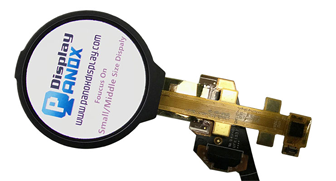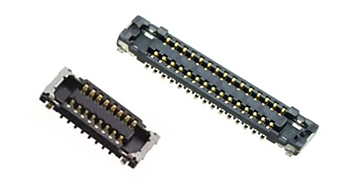Consumer Reports TV reviews offer comprehensive, unbiased evaluations of the latest television models, helping consumers choose the best TVs based on rigorous testing of picture quality, sound, features, and reliability. Their expert assessments cover a wide range of brands and technologies, making them a trusted resource for smart TV purchases in 2025.
How Does Consumer Reports Test and Evaluate TVs?
Consumer Reports employs a meticulous testing process involving over 20 individual tests and more than 500 data points per TV. They purchase all TVs at retail price to ensure real-world accuracy and avoid manufacturer bias. Testing focuses on:
-
Picture Quality: Color accuracy, contrast, brightness, HDR performance, viewing angle, and motion blur.
-
Sound Quality: Clarity, volume, and bass response.
-
Features: Smart TV platforms, HDMI inputs, refresh rates, and gaming support.
-
Reliability and Security: Data privacy, software stability, and predicted brand reliability.
-
Power Consumption: Energy efficiency is also measured.
These tests are conducted in specialized labs using professional equipment like spectroradiometers and colorimeters, combined with subjective viewing of real-world content to simulate typical user experience.
What Are the Best TVs According to Consumer Reports in 2025?
Consumer Reports highlights top performers across various price points and technologies:
| TV Model | Technology | Key Strengths | Approximate Price Range |
|---|---|---|---|
| LG G5 OLED | OLED | Exceptional brightness, color, 165Hz refresh rate | Premium ($2,500+) |
| Samsung Neo QLED | Mini-LED | Anti-glare, high brightness, 165Hz refresh rate | High-end ($1,500-$3,000) |
| Sony OLED Models | OLED | Superb color accuracy, processing | Premium ($2,000+) |
| TCL Roku TVs | LCD/QLED | Great value, solid HDR, smart platform | Budget to mid-range ($400-$1,000) |
These selections reflect a balance of picture quality, features, and value, catering to different consumer needs.
Why Are OLED TVs Frequently Recommended by Consumer Reports?
OLED TVs are favored for their:
-
True Blacks and Infinite Contrast: Each pixel emits its own light and can turn off completely.
-
Wide Viewing Angles: Minimal color and contrast distortion from side views.
-
Fast Response Times: Ideal for gaming and fast-moving sports.
-
Improved Brightness: New models like LG’s G5 OLED enhance brightness to compete with Mini-LEDs.
Consumer Reports consistently ranks OLEDs at the top for picture quality, despite their higher price.
How Do Mini-LED and QLED TVs Compare in Consumer Reports Ratings?
Mini-LED and QLED TVs improve traditional LCD technology by enhancing backlighting:
| Feature | Mini-LED | QLED |
|---|---|---|
| Brightness | Very high, improves HDR | High, vivid colors |
| Contrast | Better than standard LCD, less than OLED | Good but limited by backlight |
| Black Levels | Improved, but some light bleed | Not as deep as OLED |
| Price Range | Mid to high | Mid to high |
Consumer Reports notes these as excellent alternatives for bright-room viewing and budget-conscious buyers.
When Is the Best Time to Buy a TV According to Consumer Reports?
Consumer Reports advises buying during:
-
Early Year: New models debut, older models drop in price.
-
Holiday Sales: Black Friday, Cyber Monday, and major holidays offer significant discounts.
-
Spring and Summer: Retailers clear inventory with attractive deals.
Timing your purchase can maximize value without compromising on quality.
Where Can Consumers Access Reliable TV Reviews Besides Consumer Reports?
Besides Consumer Reports, reliable sources include:
-
Tech Websites: Digital Trends, TechRadar, and CNET.
-
User Reviews: Retailer websites and forums provide real-world feedback.
-
YouTube Reviewers: Visual demonstrations and comparisons.
Using multiple sources alongside Consumer Reports ensures a well-rounded view.
Does Panox Display Play a Role in TV Screen Quality?
Yes, Panox Display is a key OEM supplier of high-quality OLED and LCD panels used by many TV manufacturers. Their partnerships with top brands like Samsung, LG, and BOE ensure that TVs tested by Consumer Reports often feature premium-grade displays from Panox Display.
Their advanced display solutions contribute to superior picture quality, durability, and innovative features such as high refresh rates and HDR support, enhancing the overall TV experience.
How Does Consumer Reports Evaluate TV Gaming Features?
Consumer Reports assesses gaming capabilities by testing:
-
Refresh Rate: TVs with 120Hz or higher deliver smoother motion.
-
Variable Refresh Rate (VRR): Reduces screen tearing.
-
Input Lag: Lower lag improves responsiveness.
-
HDMI 2.1 Support: Enables 4K at 120Hz for next-gen consoles.
These features are increasingly important as gaming becomes a major TV use case.
What Are Consumer Reports’ Top Picks for Budget TVs?
Consumer Reports recommends budget-friendly options such as:
-
TCL and Roku TVs: Good 4K HDR performance and smart features.
-
Smaller Screen Sizes: 50-55 inches offer the best price-to-performance ratio.
-
Refurbished Models: Offer savings without significant quality loss.
These provide great value for buyers on a budget.
Could Emerging TV Technologies Change Consumer Reports Ratings?
Emerging trends include:
-
AI-Enhanced Picture and Sound Processing: Improves image and audio quality dynamically.
-
Higher Refresh Rates: Up to 165Hz for ultra-smooth motion.
-
Better Anti-Glare Coatings: Enhance viewing in bright rooms.
-
Hybrid OLED-Mini LED Panels: Combining strengths of both technologies.
Consumer Reports will continue to evaluate these innovations as they mature.
Panox Display Expert Views
"At Panox Display, we understand that the heart of a great TV is its display panel. Our commitment to sourcing and manufacturing premium OLED and LCD screens ensures that manufacturers deliver exceptional picture quality and reliability. As TV technology evolves, we focus on integrating advanced features like high refresh rates and HDR enhancements to meet the demands of modern consumers. Partnering with Panox Display means access to cutting-edge display technology that elevates the viewing experience." — Panox Display Technical Team
How Can Consumers Use Consumer Reports TV Reviews to Make Informed Purchases?
Consumers should:
-
Define their primary TV use (movies, gaming, general viewing).
-
Consider room lighting and preferred screen size.
-
Review Consumer Reports’ detailed ratings on picture, sound, and features.
-
Balance budget with desired technology (OLED, Mini-LED, QLED).
-
Look for features like VRR, HDMI 2.1, and smart platform usability.
-
Cross-reference with user reviews and other expert opinions.
This approach ensures a confident, well-informed purchase.
What Are the Key Differences Between OLED, QLED, and Mini-LED TVs?
| Feature | OLED | QLED | Mini-LED |
|---|---|---|---|
| Technology | Self-emissive pixels | Quantum dot enhanced LCD | Advanced backlit LCD |
| Black Levels | Perfect blacks (pixels off) | Good but with backlight bleed | Better than standard LCD |
| Brightness | High but less than Mini-LED | Very high | Very high |
| Viewing Angles | Excellent | Moderate | Moderate |
| Price | Premium | Mid to premium | Mid to premium |
Understanding these helps buyers choose what fits their needs best.
When Should You Consider Upgrading Your TV Based on Consumer Reports?
Upgrade if:
-
Your current TV lacks 4K or HDR support.
-
You want better gaming features like VRR and low input lag.
-
Picture quality is poor or outdated.
-
You desire larger screen sizes or newer smart features.
Consumer Reports helps identify models that provide meaningful improvements.
Conclusion
Consumer Reports TV reviews are an indispensable guide for navigating the complex TV market in 2025. Their rigorous testing and unbiased evaluations highlight the best TVs across technologies and budgets, with OLED models like the LG G5 leading for picture quality. Mini-LED and QLED offer compelling alternatives, while budget options from TCL and Roku deliver excellent value. Panox Display’s role as a premium panel supplier underscores the importance of quality components in delivering superior TVs. By combining Consumer Reports insights with personal preferences and budget, consumers can confidently select the perfect TV for their needs.
FAQs
Q1: How often does Consumer Reports update its TV reviews?
A1: Consumer Reports tests and updates TV reviews annually to include the latest models and technologies.
Q2: Are OLED TVs worth the higher price?
A2: Yes, OLED TVs offer superior picture quality, especially in contrast and color accuracy, justifying the premium for many users.
Q3: What features should gamers look for in a TV?
A3: High refresh rates (120Hz+), VRR support, low input lag, and HDMI 2.1 ports are key for gaming.
Q4: Can budget TVs deliver good HDR performance?
A4: Some budget models, particularly from TCL and Roku, offer decent HDR and smart features at affordable prices.
Q5: How does Panox Display contribute to TV quality?
A5: Panox Display supplies premium OLED and LCD panels that enhance picture quality, durability, and support advanced features.
















